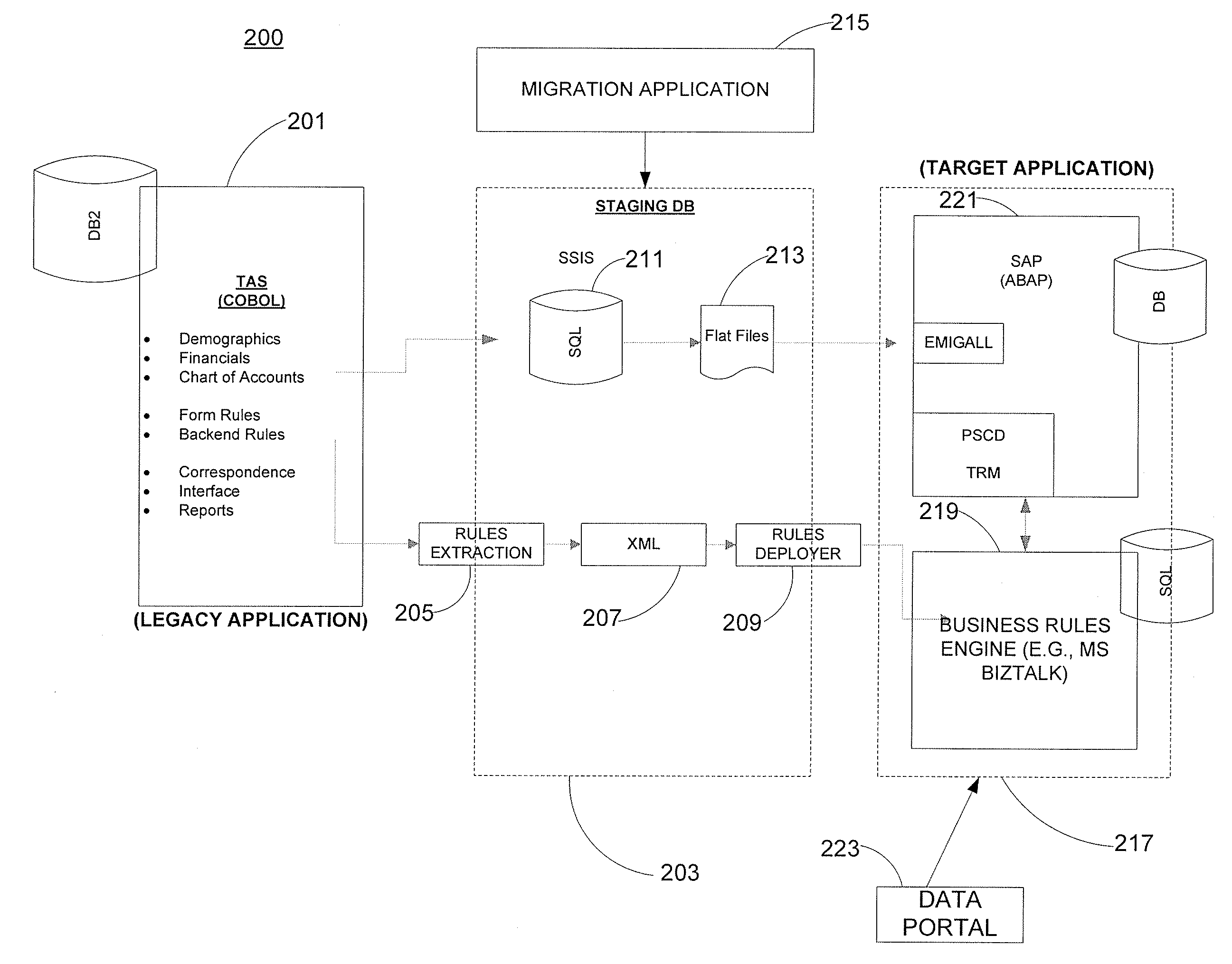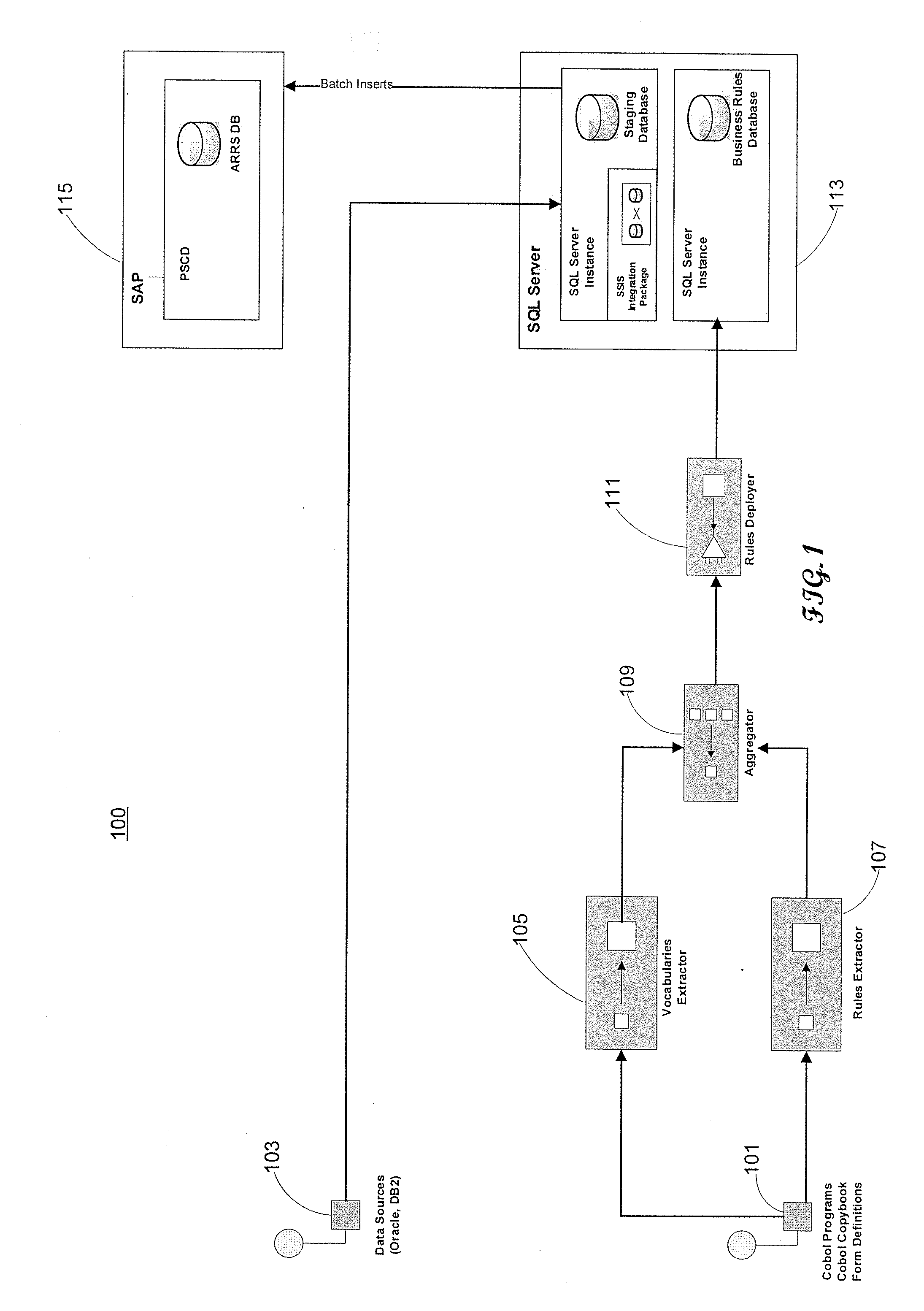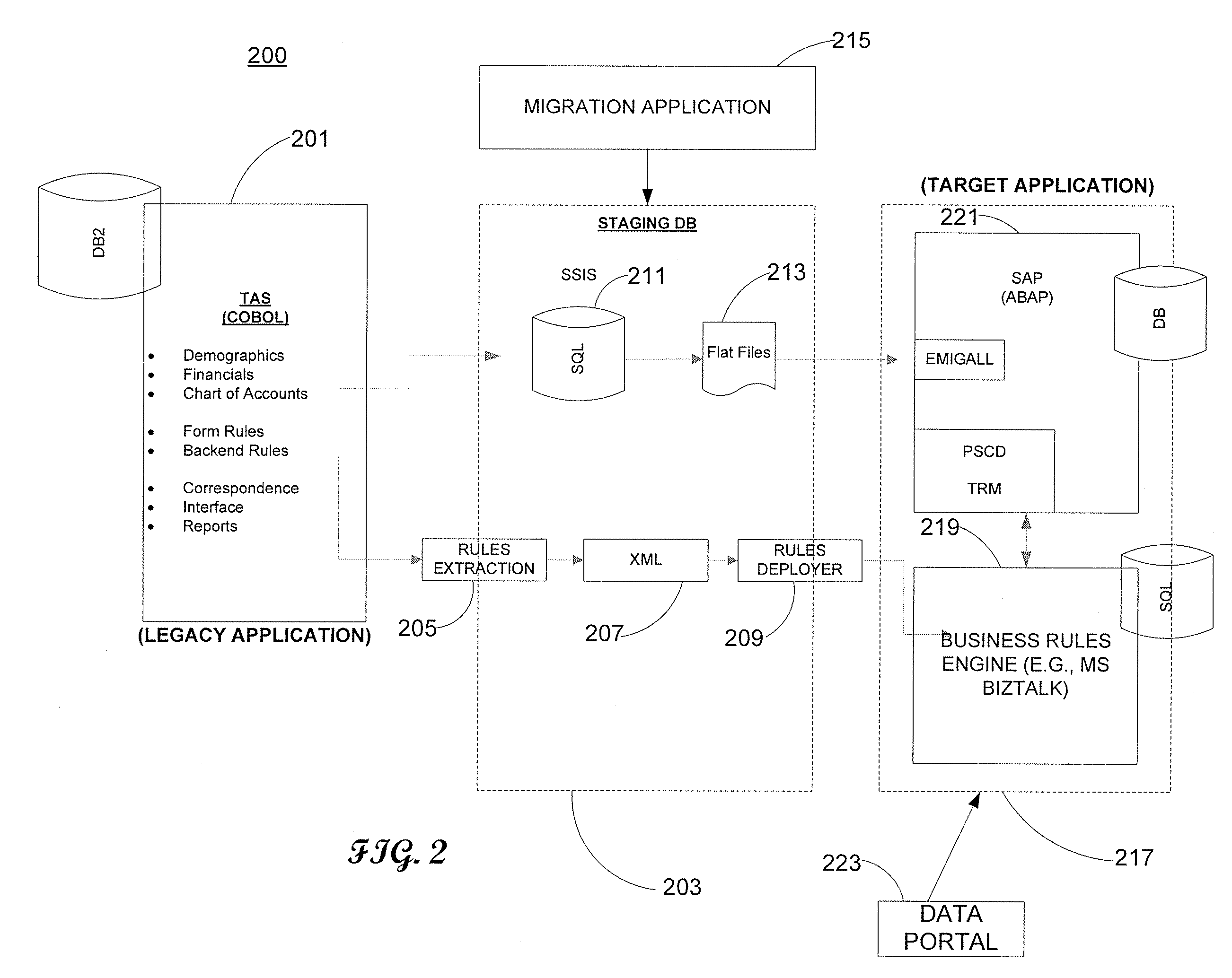Migration of Legacy Applications
- Summary
- Abstract
- Description
- Claims
- Application Information
AI Technical Summary
Problems solved by technology
Method used
Image
Examples
first embodiment
[0086]FIG. 3 shows high level flow 300 of TAS to AERS Rule Engine conversion in accordance with an embodiment of the invention. Flow diagram 300 shows an overall high level flow of the legacy rule engine architecture in order to:[0087]Convert COBOL Driver program to BizTalk™ (components 319-325). This is a one-time process during which all data parts making up the business rules in Legacy Rules Store (component 325) are identified and extracted by TAS Converter (component 321), converted to Business Rule Language XML to make it comprehensible by the BizTalk Rules Engine, then migrated to the Rules Store (component 315) by the Rules Deployment Tool (component 317).[0088]Expose business rules to perform validation (components 309-313). These are the business rules that have been extracted in the one-time process described above. These rules are organized in an ordered fashion, grouped by specific tax forms they relate to. AERS Vocabularies have also been automatically built during the...
second embodiment
Authoring Policies and Vocabularies
[0115]There are several ways to author policies and vocabularies. The most common way, and the one used exclusively by the business analysts who are the main target of rule-based processing, is to use the Business Rule Composer tool. The following discusses authoring for programmers. These techniques enables one to write applications that create rules dynamically and lets one create tools for application development, as well. One can author rulesets outside the composer in two ways. These approaches are primarily for tools development and system administration. The first uses XML documents. This is the approach BizTalk uses to export and import policies and vocabularies. The other is through .NET APIs and programming.
[0116]Programmers having experience with database administration may have conducted bulk data dumps of a relational database to a text file. These have usually been flat files in formats such as CSV. XML offers ...
PUM
 Login to View More
Login to View More Abstract
Description
Claims
Application Information
 Login to View More
Login to View More - R&D
- Intellectual Property
- Life Sciences
- Materials
- Tech Scout
- Unparalleled Data Quality
- Higher Quality Content
- 60% Fewer Hallucinations
Browse by: Latest US Patents, China's latest patents, Technical Efficacy Thesaurus, Application Domain, Technology Topic, Popular Technical Reports.
© 2025 PatSnap. All rights reserved.Legal|Privacy policy|Modern Slavery Act Transparency Statement|Sitemap|About US| Contact US: help@patsnap.com



